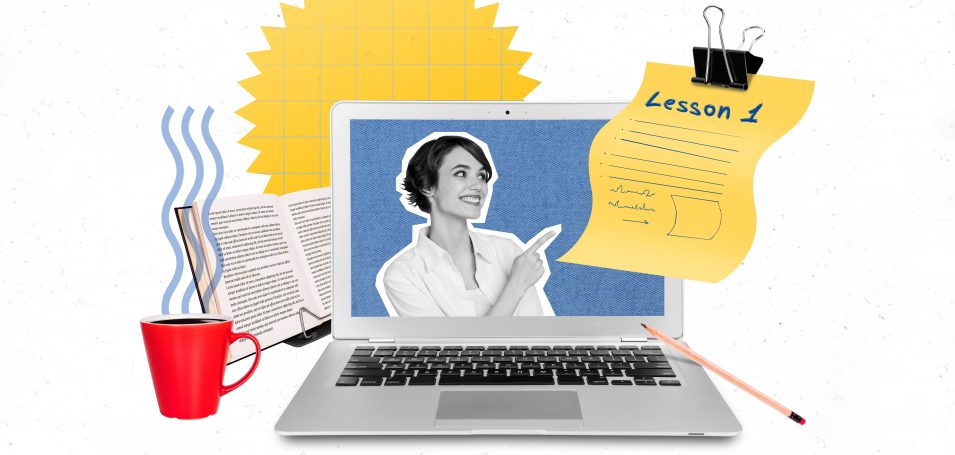Many customer education leaders make the mistake of focusing wholly on what their organization is looking to achieve from a customer education program, and forgetting that their ideal customer will have their own goals entirely. While your business might want to increase product adoption or deflect support tickets, the customers aren’t queuing up to make your CSMs life easier or to spend money on new features.
In The Customer Education Playbook: How Leading Companies Engage, Convert and Retain Customers, myself and Thought Industries’ CEO Barry Kelly discuss how to uncover your customer’s goals – how to recognize the way that they want to see success with your product, and critically, how to put that value proposition front and center.
This chapter in particular includes example questions to send to your customers to help you to better learn their definition of success, plus an interview with Eric Peters from HubSpot, who describes how product-agnostic content has reduced time to value for HubSpot customers. You can get your own copy of the book right here, and I’ll cover some of the main themes in this article, below.
Know Who Will be Buying Your Product
“Success will look different for each customer, but it’s almost always related to doing their job with less effort and with more accuracy.”
Start by asking yourself, who is your customer? That’s not just the person making the buying decision, but also the department who will deploy the technology, and key stakeholders from teams such as Finance, IT, DevOps or even HR who need to be involved in the lifecycle of the product. They all have different jobs, so the value proposition will look different for each of these customer segments. Remember, what’s transformational for an administrator is not the same as what’s going to speak to a conventional user.
Think about segments as well as users
If you have a horizontal product that cuts across industries, you may also need to think about how those needs differ from one industry to another. A marketing team’s day job is different from a consulting agency, for example, so they will see value differently and need an alternate learning journey. This could be as simple as creating two customer education paths and asking users to self-select their persona when they enter your website or engage with your materials, but to make it happen, you have to identify that segment to begin with.
Create content with customer goals in mind
Once you’ve identified these segments and personas, do an analysis of the jobs that each customer is doing. You can then understand how they could be using your product to make that job easier or more accurate and design effective learning around that value proposition.
In practice, creating content using customer goals is the difference between saying “Here’s how to use Zoom” and saying, “Here’s how to conduct effective remote meetings using Zoom.” Conducting remote meetings is part of the customer’s job, and you’re using education to support them in making that job easier, with your product as the tool that helps them get there. Don’t forget! Customer goals will evolve over time, so think about what customers need to learn at every stage of their journey with your business, not just when they initially adopt.
Understand the Importance of “Aha” Moments
“Aha moments are transformational in terms of brand loyalty and adoption, and so they are essential to capture and understand.”
An aha moment is an exact point where a user can tangibly see that your product is going to make a real difference in their work, and help them to progress. Finding these aha moments is critical, as you want to be able to guide users to them as quickly as possible. Remember, while your customer’s first aha moment might be soon after onboarding, when they realize how the product is going to help them, the customer doesn’t stop needing support or guidance once they have reached that initial understanding of how the product works; their need just changes.
Without customer education as a guide, you’re risking the user getting frustrated or churning, or taking a lengthy route to a simple fix and ending up way off course. Instead, try leveraging aha moments to map the whole customer journey. An effective learning journey will then guide users from one aha moment to the next in the shortest possible time, helping them to gain the maximum amount of value in the least possible time throughout their lifecycle. At its core, this is what customer education is all about.
Capture the Right Data to Isolate “Aha” Moments
“Part of your role as a customer education leader is to acknowledge there are pain points and moments of friction in any product, and create an elegant design for these moments of frustration, just as much as you do for the aha moments. Create a learning journey that actively targets that friction rather than ignoring it.”
You can isolate these aha moments using a mixture of quantitative and qualitative research. Start with your analytics, whether you manage those in-house or you integrate with a third-party tool. Take a look at the correlations between customers with sustained product adoption, or the common behaviors in customers who renew their licenses. These are groups of customers who, by definition, see value in your product, so that data is great to leverage to determine which moments matter.
At the same time, look at the converse: the customers who churn or who don’t adopt your product. What actions or clusters of actions are the first group engaging in that the non-adopted customers aren’t? Doing this exercise greatly helps you identify the moments that matter most to your customers.
Talk to your customers
Analytics are valuable, but I can’t emphasize enough how important it is to talk to your customers, too. This qualitative research is essential, both with your sustained-use customers and the ones who churn. Ask your engaged customers, “What do you love about the product?” “What value do you get from using it?” For disengaged customers, ask, “Why didn’t you stick around?” “What was lacking for you?”
As discussed above, user needs change over time. Make sure to define user expectations at the earliest stages of product adoption as well as periodically throughout the journey. You can do this using Onboarding assessments, Quarterly Business Reviews, or an automated solution like a customer survey. If you don’t currently have a stream of explicit data that lets you hear from your customers, add one!
Measure your Ability to Provide Customers with their Definition of Success
“Your North Star — your aspirational goal — should be that your customers are getting the most value out of your product, and it makes sense to measure this by LTV.”
The goal of customer education is to provide customers with the maximum value so that they can do the best job possible using your product or service. The best way to measure the value you provide is with LTV, customer lifetime value.
However, anyone who has used this metric knows – it’s a hard calculation to get! It requires a lot of patience, relies on several variables, and is a lagging indicator, confirming trends or behavior after the fact rather than predicting ahead of time.
There’s no doubt that you want to see a strong correlation between trained users and lifetime value. However, it may be easier to focus on reducing TTV as a strategy to get you there. Work on improving your ability to identify the aha moments and streamline the journey for customers from one aha to the next. The more you can deepen that engagement for your users, the more likely you are to create champions and advocates, and boom – you’ll find that you’re naturally increasing the lifetime value of your customers.
Keep Your Customers’ Goals Front and Center
Being guided by your organization’s metrics for success is really important, but equally important are how your customers see success. It’s only by keeping both of these goals central to your customer education strategy, that you can ensure your program gets off to a strong start.
Later in the Customer Education Playbook, Barry Kelly and I discuss how to practically plan and create the content for your education plan, as well as measure its success and present it to the C-suite.
You can learn more, and get hold of your own copy right here.



